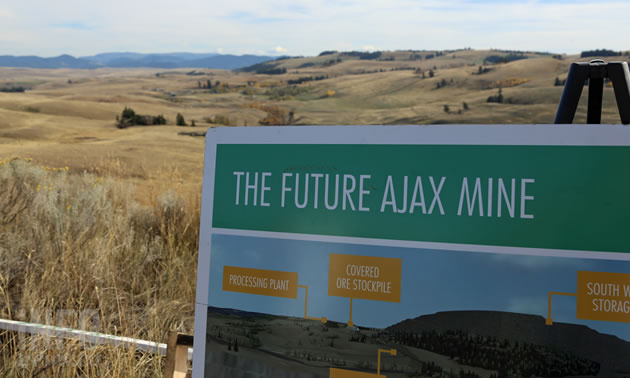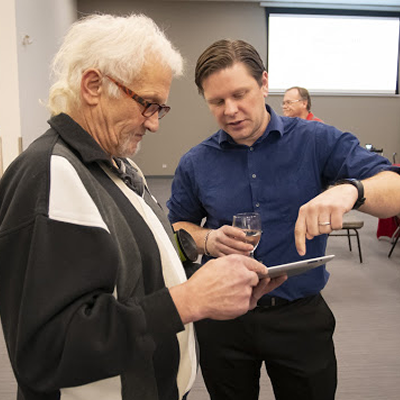Ajax open-pit copper and gold mine not granted an environmental assessment certificate

A sign for the proposed Ajax Project. — Photo courtesy InfoTel News
Environment and Climate Change Strategy Minister George Heyman and Energy, Mines and Petroleum Resources Minister Michelle Mungall have decided not to issue an environmental assessment certificate to KGHM Ajax Mining Inc. for the Ajax project.
The company proposed a 1,700-hectare open-pit copper and gold mine, located approximately 10 kilometres southwest of Kamloops and on the asserted traditional territories of the Stk'emlupsemc te Secwépemc Nation (SSN), Ashcroft Indian Band, Lower Nicola Indian Band and Whispering Pines/Clinton Indian Band.
Having considered the Environmental Assessment Office’s (EAO) summary assessment report, the EAO and Canadian Environmental Assessment Agency’s joint federal comprehensive study and assessment report, the recommendation of the executive director of the EAO not to issue a certificate; and submissions from the SSN, the City of Kamloops and the company, the ministers concluded that taken as a whole, the potential, and in many cases significant, adverse effects of the Ajax project outweighed the potential benefits.
Key findings from the environmental assessment noted by the ministers include:
- Fifty-three residual and cumulative adverse effects across the five pillars assessed by the EAO (environmental, economic, social, heritage and health) in areas such as air quality and human well-being, Jacko Lake and surrounding area, social and economic valued components, as well as grasslands and ecosystems;
- The conclusion by the EAO that 21 of these adverse effects were of moderate-to-high magnitude;
- In addressing the 21 high-to-moderate-magnitude adverse effects, the EAO had low-to-moderate confidence in its assessment of nine of the effects;
- The compounding potential of the adverse effects; and
- Significant adverse effects to Indigenous heritage and to the current use of lands and resources for traditional purposes.
Given these conclusions and the close proximity of Ajax to the City of Kamloops, particularly the neighbourhood of Aberdeen, including an elementary school, the ministers concluded the adverse effects would not likely be mitigated to an acceptable level and would therefore present an unacceptable risk.
The ministers acknowledged the high importance of the area to the culture of SSN and agreed that the Ajax project would result in significant adverse effects to Indigenous heritage and to the current use of lands and resources for traditional purposes. Notwithstanding the mitigation measures and EA certificate conditions proposed by the EAO, the project would also have adverse impacts on SSN’s asserted Aboriginal rights and title, which in many cases, could not be avoided or minimized. The ministers concluded these effects were unacceptable in the circumstances.
The environmental assessment was co-ordinated between the EAO and the Canadian Environmental Assessment Agency, and included the establishment of an intergovernmental advisory working group, consultation with Indigenous groups, extensive engagement with the public and the City of Kamloops, the creation of a community advisory group and the negotiation of a collaboration agreement with the SSN.
A graphical timeline of the project’s environmental assessment and the information that informed the assessment can be found at the following link:
https://projects.eao.gov.bc.ca/api/document/598a1408832a6300190e451f/fetch
To view the Ministers’ Reasons for Decision and other information on the project, please visit the project page on the EAO website: http://www.eao.gov.bc.ca/decision.html




